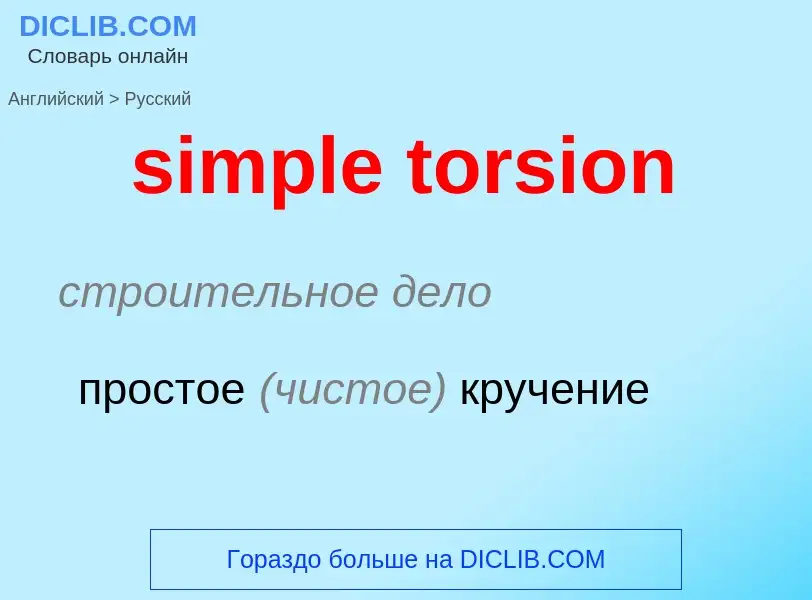Translation and analysis of words by ChatGPT artificial intelligence
On this page you can get a detailed analysis of a word or phrase, produced by the best artificial intelligence technology to date:
- how the word is used
- frequency of use
- it is used more often in oral or written speech
- word translation options
- usage examples (several phrases with translation)
- etymology
simple torsion - translation to russian
строительное дело
простое (чистое) кручение
общая лексика
крутильный маятник
Definition
Wikipedia
In differential geometry, the notion of torsion is a manner of characterizing a twist or screw of a moving frame around a curve. The torsion of a curve, as it appears in the Frenet–Serret formulas, for instance, quantifies the twist of a curve about its tangent vector as the curve evolves (or rather the rotation of the Frenet–Serret frame about the tangent vector). In the geometry of surfaces, the geodesic torsion describes how a surface twists about a curve on the surface. The companion notion of curvature measures how moving frames "roll" along a curve "without twisting".
More generally, on a differentiable manifold equipped with an affine connection (that is, a connection in the tangent bundle), torsion and curvature form the two fundamental invariants of the connection. In this context, torsion gives an intrinsic characterization of how tangent spaces twist about a curve when they are parallel transported; whereas curvature describes how the tangent spaces roll along the curve. Torsion may be described concretely as a tensor, or as a vector-valued 2-form on the manifold. If ∇ is an affine connection on a differential manifold, then the torsion tensor is defined, in terms of vector fields X and Y, by
where [X,Y] is the Lie bracket of vector fields.
Torsion is particularly useful in the study of the geometry of geodesics. Given a system of parametrized geodesics, one can specify a class of affine connections having those geodesics, but differing by their torsions. There is a unique connection which absorbs the torsion, generalizing the Levi-Civita connection to other, possibly non-metric situations (such as Finsler geometry). The difference between a connection with torsion, and a corresponding connection without torsion is a tensor, called the contorsion tensor. Absorption of torsion also plays a fundamental role in the study of G-structures and Cartan's equivalence method. Torsion is also useful in the study of unparametrized families of geodesics, via the associated projective connection. In relativity theory, such ideas have been implemented in the form of Einstein–Cartan theory.



![National Bureau of Standards]] (now NIST) between 1930 and 1942. National Bureau of Standards]] (now NIST) between 1930 and 1942.](https://commons.wikimedia.org/wiki/Special:FilePath/ConstantOfGravitation 003.jpg?width=200)
